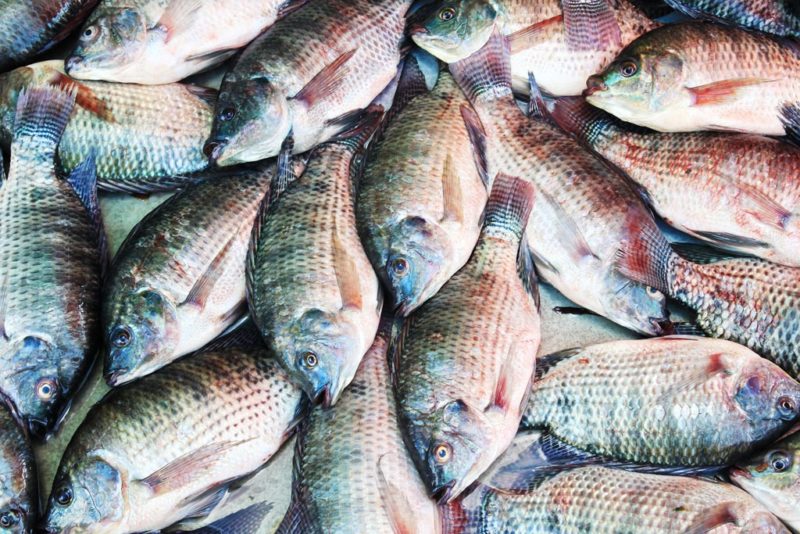
By Cliff Chiduku
Demand for fish grown globally and it has become a cheap alternative source of protein.
Fish farming, also known as aquaculture, is the practice of rearing fish and other water-based organisms in controlled environments such as tanks and ponds for food production purposes. It is a rapidly growing industry that plays a crucial role in meeting the increasing global demand for food.
The Zimbabwe government recognised apiculture as a form of livestock production which as has the potential to contribute significantly to sustainable livelihoods, food security and economic development though diversification of exports earnings.
Zimbabwe boast of one of the largest fish farming operations in Africa as it has a notable network of dammed water and has desirable climatic conditions for aquaculture to thrive. In an effort to develop a fully-fledged fish farming sub-sector, the government adopted a number of initiatives to grow the vast aquaculture potential in Zimbabwe. This is the reason why the Second Republic came up with the Fisheries and Aquaculture Development Strategy.
The strategy, which focuses on regulatory framework, capacity building, financing mechanisms and research and development, aims to provide a framework for the sustainable development of aquaculture in Zimbabwe and to ensure that it is contributing to food security, poverty alleviation, and economic growth.
Fish farming has been practiced since time immemorial with evidence of early fish farming dating back to ancient China, Egypt, and Rome. However, it has evolved significantly over time due to advancements in technology where modern aquatic practices have been adopted.
The Second Republic is pulling out all stops in making sure that fish farming contributes to the country’s development agenda and had taken advantage of the refurbished irrigation schemes and community gardens to create commercial fishing hotspot countrywide. This has seen the number of fishponds increasing from 5 634 last year to 7 247 this year.
The Presidential Fisheries Scheme has also come in handy. Under this programme more than 50 000 farmers have received fingerlings as a way to boast production.
For Zimbabwe, there are several fish species that can be thrive. The most common is the tilapia. This one can thrive in almost any weather. Tilappia can eat plant-based food and insects. One of the reasons why tilapia is farmer’s favourite is that thy can be harvested in eight months.
Catfish is another popular fish species in Zimbabwe, particularly in the Zambezi River basin. There are several catfish varieties found in Zimbabwe, including the African catfish and the smaller-sized catfish. Catfish is a good source of protein and is often consumed in traditional dishes.
Bream is a versatile fish species that is found in many Zimbabwean water bodies, including lakes, dams, and rivers. There are several bream varieties in Zimbabwe, including the largemouth bream, the smallmouth bream, and the tilapia bream.
Trout is a cold-water fish species that is found in the mountainous regions of Zimbabwe, particularly in Nyanga. Trout is a popular game fish and is often targeted by anglers. There are several trout varieties found in Zimbabwe, including the rainbow trout and the brown trout. Carp is a hardy fish species that is found in many Zimbabwean water bodies, and some popular carp varieties include common carp and the grass carp.
Production
There are several methods of fish farming, each with its own merits and considerations. The most common methods in Zimbabwe include:
Pond – This method involves raising fish in man-made or natural ponds. It is one of the oldest and simplest forms of fish farming. Ponds are stocked with fish fry or fingerlings and managed to provide optimal conditions for growth. Pond culture is suitable for various species, including catfish, tilapia, and carp.
Cages – The cage culture involves confining fish in cages or pens placed in natural bodies of water such as dams or rivers, or lakes. These cages allow water to flow freely while preventing fish from escaping. This method is commonly used for salmon, trout, and other marine species.
Recirculating aquaculture system – This is a closed-loop system that recirculates water through filtration systems to maintain optimal water quality for fish growth. It allows for high-density stocking and efficient use of resources such as water and feed. This method is commonly used for commercial purposes.
Fish farming contributes to global food security by increasing the availability of nutritious food. It helps meet the growing demand for protein-rich food, particularly in developing countries.
Fish farming creates employment opportunities, especially in rural areas where traditional fishing may be limited. It also contributes to local economies through trade and export.
The top fish producing countries in Africa and the world vary based on different factors such as geographical location, natural resources, fishing practices, and economic development. Egypt is the leading fish producing country in Africa. It benefits from its access to the Mediterranean Sea and the Red Sea, which provide abundant fishing grounds.
The country has a well-developed aquaculture sector and a long history of traditional fishing practices. Nile tilapia, mullet, and sea bream are among the most commonly harvested fish species in Egypt. Nigeria is another major fish producing country in Africa. It has a vast coastline along the Atlantic Ocean and numerous inland water bodies, including rivers, lakes, and reservoirs. Other top fish-producing countries in Africa are Morocco, Ghana, Tunisia and Algeria.
According to Statistica, the volume of global fish production amounted to 184,6 million metric tonnes in 2022, up from 178.1 million metric tonnes in 2021. Fish is one of the most widely consumed foods in the world, and it is only becoming more popular over time.
China is the largest fish producing country in the world. It has a vast coastline along the Pacific Ocean and numerous inland water bodies. China’s fisheries sector is highly developed, with both marine and freshwater fishing activities. The country produces a wide range of fish species, including carp, tilapia, catfish, and various species. Indonesia: Indonesia ranks second in global fish production. Other top fish-producing countries are India, Vietnam, United States, Brazil, and Norway.
In 2020, the government approved the Livestock Recovery and Growth Plan aimed at putting interventions to address constrains in the livestock sector. This also laid the foundation for the livestock sector to assume its prominent role in transforming the rural livelihoods and provide raw material for local companies. The livestock sector includes numerous animals among them cattle, ship, goats, poultry, bees, crocodiles, and fish. The sector is expected to grow to US$3.4 billion by 2025.
Fish farming is a critical sector that contributes to sustainable food production, food and nutrition security, and economic development. While it offers numerous benefits, careful management is necessary to mitigate environmental impacts and ensure the long-term viability of this practice.
Word from the market is a column produced by the Agricultural Marketing Authority to promote market-driven production. Feedback cchiduku@ama.co.zw or WhatsApp/Call +263781706212.






